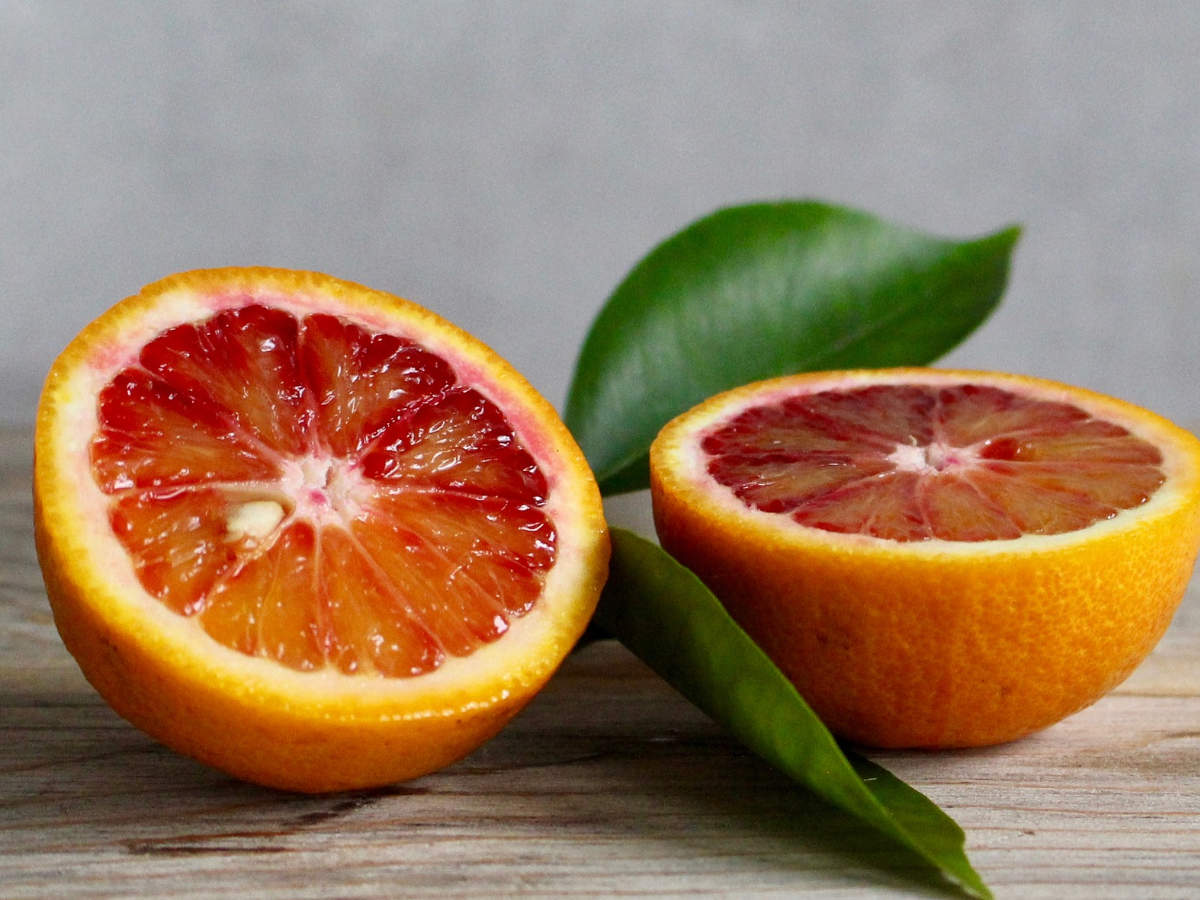
Sometimes older people will know what is going on and do not want to deal with it for various reasons such as fear of causing the family unwanted medical bills. But theres another sweet orange you should knowthe blood orange also called the red orange.

But theres another sweet orange you should knowthe blood orange also called the red orange.
What makes a blood orange red. The distinctive red colouring of blood oranges is due to the presence of naturally occurring pigments called anthocyanins. Raspberries blueberries and black rice are amongst the most common foods where we find anthocyanins. They are very common to many flowers and fruits but just not in citrus.
The blood orange is red and the thing that makes this happen is the presence of Anthocyanins which is an Antioxidant pigment. Its is common in other types of flowers and fruit but not in citrus fruits. The flesh of the oranges develops the colour if the orange is grown in partly cold weather.
A blood orange is a citrus fruit that looks similar to an orange from the outside but has deep red colored fruit and juice. The red color is the result of anthocyanin which develops when these citrus fruits ripen during warm days tempered with cooler nights. Venous blood is short in oxygen and so is a rich dark red purplish colour.
Arterial blood is full of oxygen and is bright red. This might appear to be lighter to you. If you are genuinely in doubt or have any unusual feelings or excessive tiredness then you should see your doctor quickly.
Blood oranges may have a sinister-sounding name but theyre just a natural mutation of standard oranges. This mutation led to the production of anthocyanins which make blueberries blue and blood. Blood oranges are bloody from a pigment called anthocyanin which is widely found in the plant kingdom and can appear red as in cherries and red cabbage to blue as in blueberries and cornflowers or even purple as in pansies and eggplants aubergines.
Unlike orange flesh commonly colored orange because it contains yellow-orange pigment this blood orange flesh is red because it contains a red pigment called anthocyanin. Anthocyanins are powerful flavonoids commonly present in fruits or vegetables that have red or purple color. The color is suspicious in that the red color is derrived from interaction of oxygen with the iron in the blood as it hits the air.
Arterial blood is darker red. Just because the patient told you his doctor was not concerned does not mean it is true. Sometimes older people will know what is going on and do not want to deal with it for various reasons such as fear of causing the family unwanted medical bills.
The color of oranges is affected by temperature. Only if there is a certain temperature difference cool nights vs warm days the oranges develop the deeper hues. For blood oranges the crimson flesh and reddish tinges in the skin normal oranges get their typical orange skin instead of greenish or yellow.
After some research this is what turned up first a little history and place of origin. Two different varieties of blood orange flanking a regular orange. Where do blood oranges come from.
Blood oranges originated in Sicily and Spain and va. Hi Uzma8 It would be strange to have orange blood our blood usually looks either bright red that is blood with oxygen in it or dark red that is blood without oxygen in it Sometimes if our blood mixes with other fluid it might look paler or if you had an infection and pus got mixed with blood that might make a slightly different colour. In fact blood oranges are naturally red.
As Harold McGee explains in his book On Food and Cooking. The Science and Lore of the Kitchen Blood oranges owe the deep maroon color of their juice to anthocyanin pigments which develop only when night temperatures are low. But theres another sweet orange you should knowthe blood orange also called the red orange.
While the name blood orange may not sound appealing once tasted youre likely to fall in love with this nutrient powerhouse. Blood oranges have a reddish orange outer peel and red color flesh. The red color comes from anthocyanins the same compound that makes blackberries blue and red.
The chemical in Moro Blood oranges that causes the dark red blood color is anthocyanin Anthocyannin is a temperature dependent chemical. It is COLD weather that changes the fruit color to the red blood texture. Therefore the night time temperatures must be cool to generate the color change.
Drop the night temperatures down into the low 50s. Grown to warm the anthocyanin does not turn to the. The blood orange or red-orange is a type of citrus fruit that belongs to the same family as orange which is Citrus sinensis.
It is orange in color on the outside and deep red on the inside.